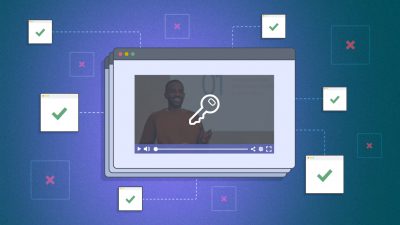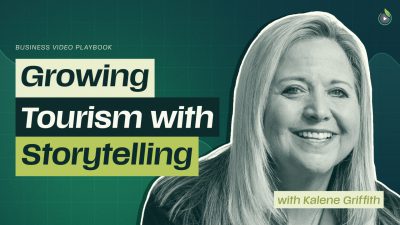This year, brands have been challenged like never before to keep up with a rapidly changing environment in the face of several ongoing crises. In particular, the pandemic has presented significant difficulties for video marketing, and not just in terms of production, but also in terms of messaging and resonating with audiences.
In this post, we dissect the approaches of Salesforce, Mailchimp, Microsoft, and Google to find important takeaways for your own campaigns.
Leadership Lessons for Crisis Management
Many companies have been faced with significant crises this year, and navigating them has not been easy. Being in a leadership role can be especially stressful and trying when dealing with so much uncertainty.
Salesforce recognized this need, and launched a series of live videos with different thought leaders to provide inspiration to those in need of guidance. Their Leading Through Change: Helping Business Manage Through Crisis playlist contains dozens of in-depth, hour-long interviews that are packed with insights.
One favorite is an interview with Marriott to discuss how they adapted to a dramatic drop off in sales.
The travel industry has been badly hit by the pandemic downturn. Many changes were immediately required to ensure the health and safety of workers and travelers alike. Hearing how Marriott grappled with these changes directly from the source can provide companies in similar situations with a pathway forward out of crisis.
The Takeaway
Many companies are struggling with similar issues. Find the common threads to share messages that resonate.
The Human Aspect
If you’re stuck at home, staring at screens all day, it can be easy to lose sight of the human connections behind all the headlines. A few different outlets have tried to remedy that in different ways. One effective approach is to shine a light on stories from frontline workers or those impacted directly by the pandemic.
Mailchimp tackled this head-on in their Essentials series. They partnered with Vice to showcase small businesses and frontline workers who confront the realities of the pandemic on a daily basis. This hard-hitting series succeeds because of the authenticity that underpins the storytelling.
Most of the videos are told from a first-person perspective. Often, nothing is more powerful than hearing a story told by those who lived it.
The Takeaway
If you’re looking to tell someone’s story and have an emotional impact on viewers, have the subject narrate in their own words to let it unfold naturally.
Focus on Home Life
At this point, many of us are used to seeing coworkers in their homes on video chats. And of course, all the interruptions that home life can bring too.
Rather than turning away and pretending it’s not happening, some brands have found that inviting more viewers into the homes of their team members has helped foster a more human connection with audiences. Microsoft’s Home Cooked video series is a perfect example.
All the videos are filmed by Microsoft employees from their homes. The concept is very simple. The employees prepare a favorite recipe for viewers, and share a little about what it means to them. It’s a surprisingly soft touch from a technology giant like Microsoft.
The production value of the footage is very DIY. Each video appears to have been filmed by the employees preparing the recipes. Still, Microsoft ensured the videos come across as being part of the same series by using a few key touches in post-production.
First, they used a relatively tight edit to cut out any unnecessary segments and keep each video under ten minutes. Then, they added a consistent intro and used the same formatting for all text overlays throughout each video. Finally, they added subtle music tracks to help the videos feel more polished and professional. Our favorite is the recipe for empanadas, but they’re all very endearing.
The Takeaway
Consistent editing and text formats help user-generated videos feel more professional and on-brand. Of course, our guide to filming yourself solo can help those in need of some guidance.
Focus on the Future
With the fast pace of the news cycle, and few events to look forward to, it’s easy to forget that a new day is on the horizon. While it’s not exactly escapism, thinking about the future can be especially comforting at times like these. After all, there’s every reason to think it will all eventually be behind us.
In that context, Google decided to tell the stories of those who are very future-focused: the high school graduating class of 2020. Entitled Our dreams won’t wait, this series features a mix of video journals and professionally produced videos. It shares some of their experiences of the pandemic, as well as their hopes for the future.
Picking a path after high school is difficult and stressful under any circumstances. Still, you can hear the well-earned pride and hope in each person’s voice as they share what they’re looking forward to.
The page where Google shared these stories also features contextual mentions of different technologies that empower students as they embark on their next adventures. While it’s borderline sales-y, it doesn’t feel totally out of place. After all, remote education would not be possible without technology. Google is behind many of the tools teachers currently rely on.
The experiences of the young adults feel very universal, while their individuality still shines through. By adding home video journals from the students, Google’s storytelling comes across as very authentic. This is especially key because of the product plugs. Looking to the future can help give people hope and aspiration when they sorely need it.
The Takeaway
If you can find an angle that fits, future-focused content can help audiences stay positive and find something to look forward to.
How has your video marketing changed over the course of 2020? Did you try anything new?








